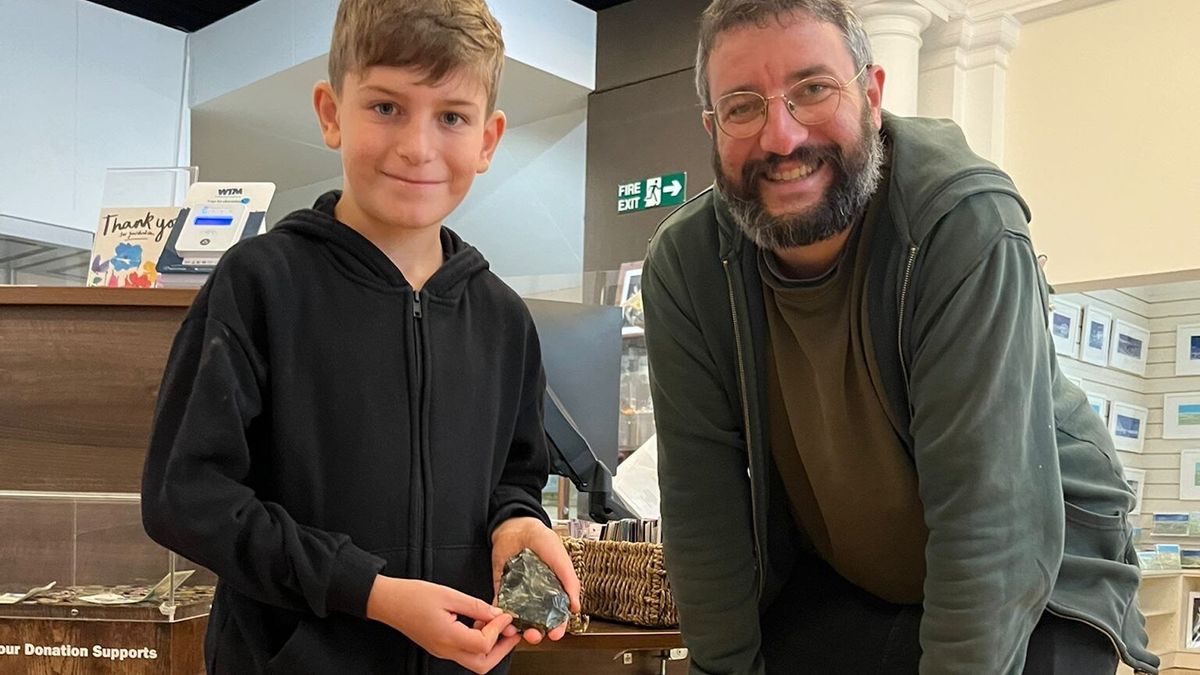Three years ago, a 6-year-old boy named Ben discovered a strange rock on a beach in Sussex, England. He took it home, but then lost track of it. Now, the object has been identified for what it really is: a 50,000-year-old Neanderthal hand axe.
When James Sainsbury, curator of archaeology and social history at Worthing Theatres and Museums, received an email from Ben’s mother about her son’s discovery, he didn’t expect the object to be anything special, Sainsbury told Live Science.
“I get emails like this all the time, especially about discoveries found on the beach, and they’re usually just pebbles that look weird,” he said. “But as soon as I saw the photo, I thought, ‘That’s an Upper Paleolithic Neanderthal hand axe.’ It’s an absolutely incredible discovery.”
According to Sainsbury, Neanderthal hand axes are relatively small and dark double-edged flint, which makes them recognizable. They are clearly different from Middle or Lower Paleolithic finds in Sussex. Neanderthals used these tools for activities such as breaking bones and sucking out marrow.
Sainsbury specifically identified the artifact as a Mousterian hand axe, meaning “it dates from that very late Neanderthal period when their days in Europe and Britain were really numbered.” He added that some scholars even suggest that Mousterian hand axes were made by the last Neanderthal generations in that region.
“As far as Sussex is concerned, it’s actually quite rare,” Sainsbury said. “In our museum, we have one example and only one. They’re extremely rare because presumably Neanderthal population densities were very low.”
On November 24, Ben and his family brought the artifact to Worthing Museum, where Sainsbury confirmed that it was indeed a Neanderthal axe. Because of how “fresh” and undamaged it looked, he suspects the artifact was safely buried underwater for most of its history.
“It’s very unlikely that it would have been able to get to the shore at such a high altitude on the beach without being damaged,” he explained. “So I think it was brought with tonnes of shingle to increase the beach’s protection, either from the English Channel, where it would have been drowned from an old river bed now submerged, or from the North Sea, in the area of Doggerland.”
Doggerland is a now-submerged area beneath the North Sea that was inhabited by prehistoric people before the land was submerged by rising sea levels around 8,000 years ago. Sainsbury and his colleagues are still investigating when the last batch of pebbles was deposited on Shoreham beach.
“Ben is now 9 and really knows his stuff – from the Iron Age to the Bronze Age to the Romans,” said Sainsbury. “He clearly has a real interest in archaeology.”
Ben loaned the hand axe to Worthing Theatres and Museum, and Sainsbury had it on display just an hour after meeting Ben’s family. It will remain there until February, and the curator is pleased to report that it is already attracting more visitors than usual.
